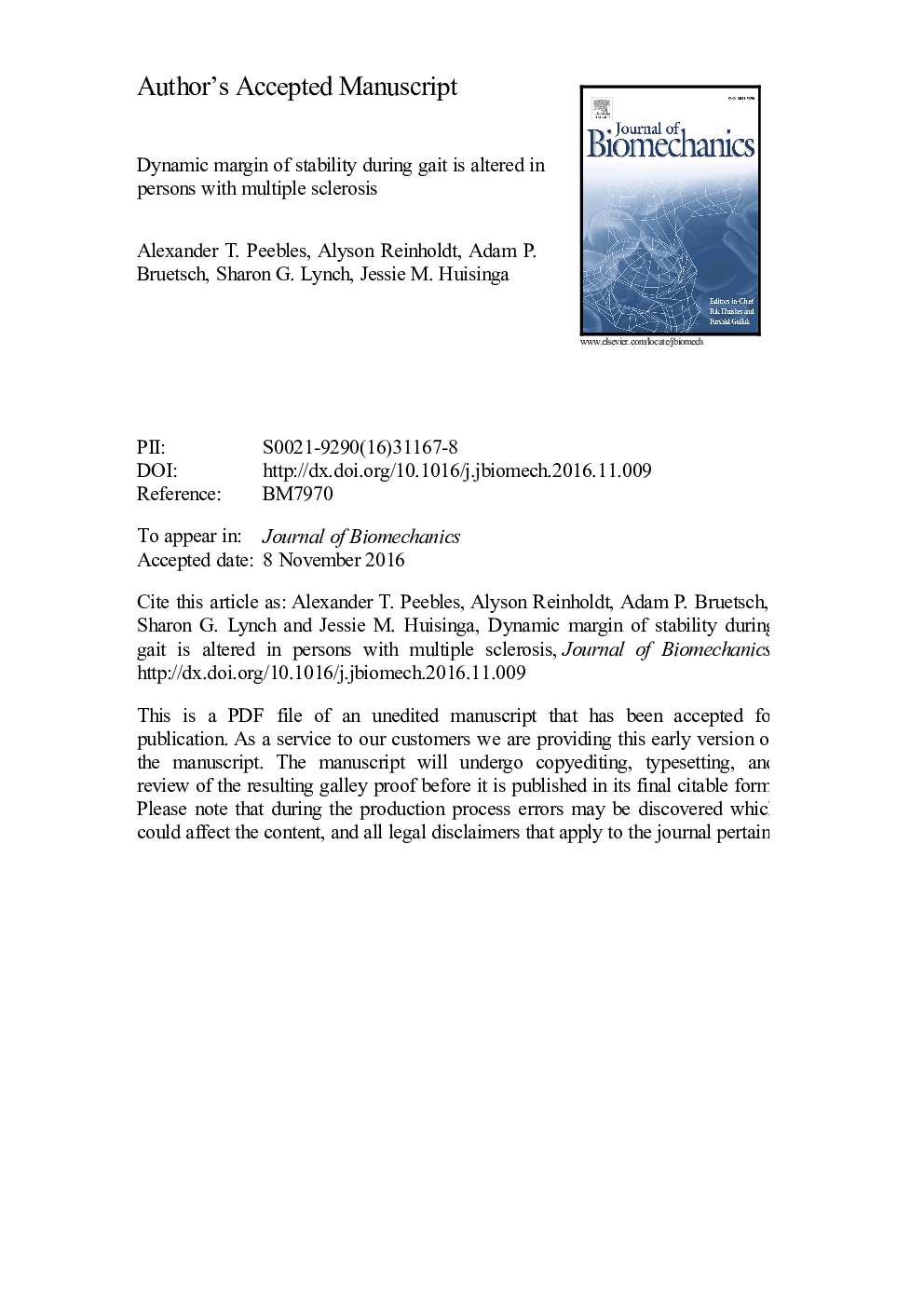| Article ID | Journal | Published Year | Pages | File Type |
|---|---|---|---|---|
| 5032297 | Journal of Biomechanics | 2016 | 26 Pages |
Abstract
Persons with multiple sclerosis (PwMS) have high fall risk due to altered balance. To measure dynamic balance during walking, margin of stability (MoS) examines how the extrapolated center of mass moves relative to the base of support. This study investigates how MoS is affected in PwMS during walking at preferred, slow, and fast speeds, as well as the relationship between MoS and the Expanded Disability Severity Score (EDSS), fall history, and self-report balance confidence questionnaire. MoS was evaluated in PwMS without clinical gait impairment (MS1; n=20), PwMS with clinical gait impairment (MS2; n=20), and age-matched healthy controls (HC) (n=20), in the anterior/posterior (AP) and medial/lateral (ML) direction at heel strike and midstance. In the AP direction, MS2 had a higher MoS than HC (p<0.001) and MS1 (p<0.001) at heel strike and midstance. In the ML direction, MS2 had a higher MoS than HC (p<0.001) at heel strike only. At midstance, slow pace had a lower MoS than preferred pace (p<0.001) and fast pace (p=0.007). Compared to HC, PwMS walk slower which increases their AP MoS. In the ML direction, slow walking causes lower MoS at midstance, so PwMS increase their MoS by taking wider steps. AP MoS correlated with EDSS (p=0.008) and number of falls (p=0.001), and ML MoS correlated with number of falls (p=0.027). Walking slower, with shorter step length, and with wider step widths increases MoS for PwMS but may be a poor adaptive gait strategy since falls still occur.
Related Topics
Physical Sciences and Engineering
Engineering
Biomedical Engineering
Authors
Alexander T. Peebles, Alyson Reinholdt, Adam P. Bruetsch, Sharon G. Lynch, Jessie M. Huisinga,
